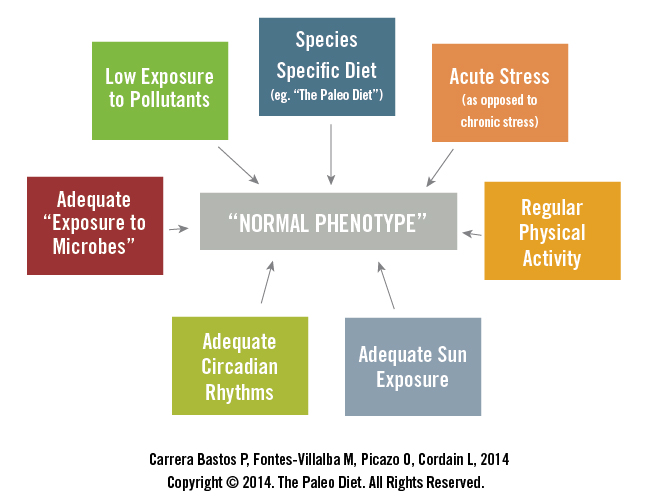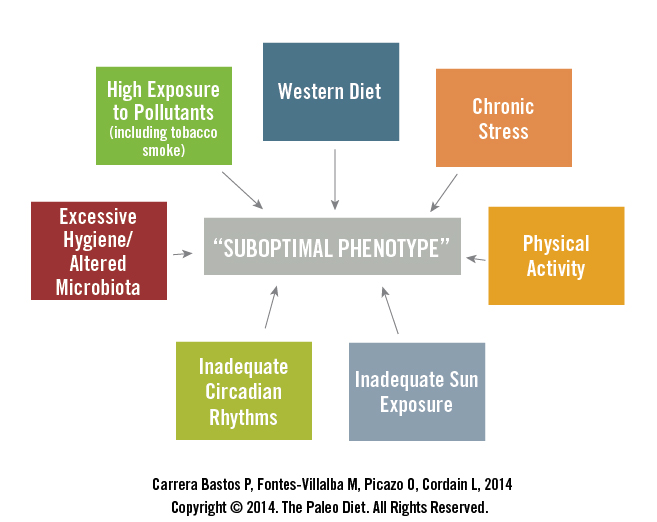How Health Markers and the Human Genome Affect Diet and Lifestyle

Physical activity, sleep, sun exposure, and dietary needs of every living organism (including humans) are genetically determined.
In this regard, despite the occurrence of important genetic changes since the Agricultural Revolution, most of the human genome is comprised of genes selected during the Paleolithic Era, a period that lasted from about 2.5 million to 11,000 years ago.
Moreover, hunter-gatherers and other populations minimally affected by modern habits, when compared to industrialized populations, exhibit superior health markers, body composition, and physical fitness and a very low incidence of chronic degenerative diseases.
As such, we recognize the profound changes in diet and lifestyle that occurred after the Neolithic Revolution – and more so after the Industrial Revolution and the Modern Age – are too recent on an evolutionary time scale for the human genome to have fully adapted.
This means that to achieve our normal (optimal) phenotype, it is important to mimic the ancestral environment, as pictured in the Normal Phenotype figure below.

Because we are not genetically adapted to the modern environment, when exposed to that environment virtually everyone will experience a suboptimal phenotype, pictured below.
A suboptimal phenotype may or may not be considered pathological, depending on genetic and epigenetic variants.
Cordially,
Loren Cordain, Ph.D., Professor Emeritus
Pedro Bastos MA MS Ph.D. candidate in Medical Sciences at Lund University, Sweden; International College of Human Nutrition and Functional Medicine
Maelan Fontes MS Ph.D. candidate in Medical Sciences at Lund University, Sweden; International College of Human Nutrition and Functional Medicine
Oscar Picazo MSc, PhD candidate in Human Nutrition; Nutriscience Education and Consulting Lda, Lisbon (Portugal)